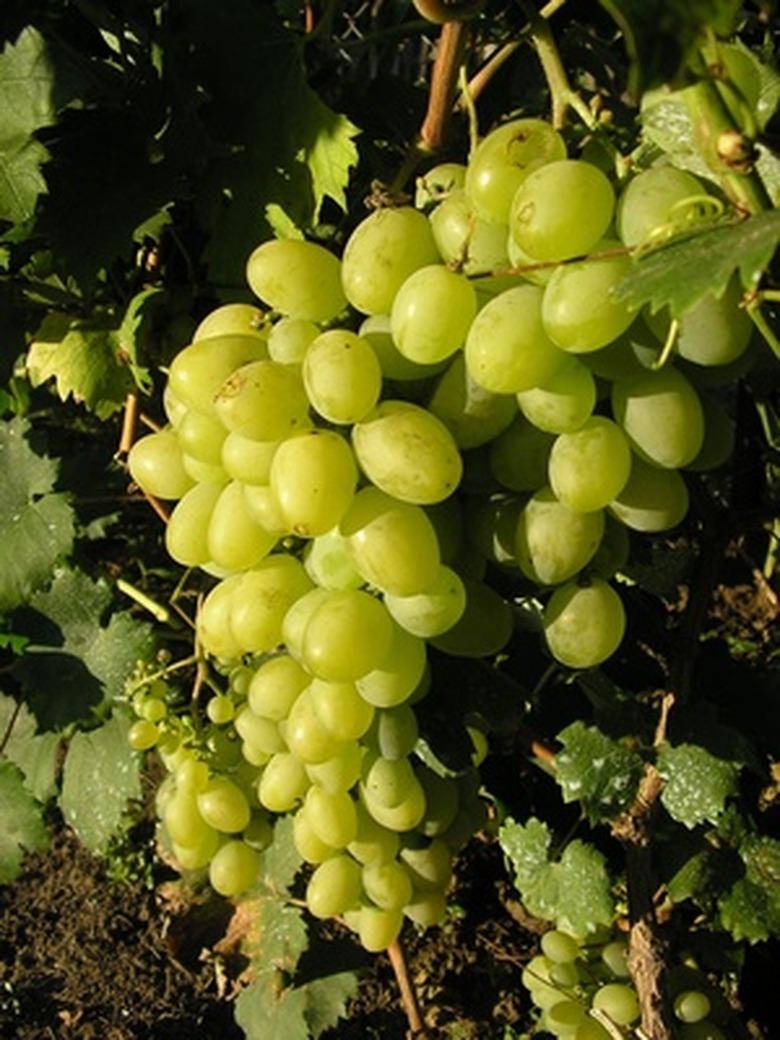Fruits & Vegetables Grown In Chile
A strap of land along South America's southwest coast, Chile is a nation of impassable mountain peaks, humid coastal woodlands and a fertile central river valley that produces abundant fruits and vegetables. Santiago sits at the northern end of this agricultural cropland. Climate overall is comfortable and mild, but temperature extremes exist based on elevation and latitude. As of April 2010, The Food and Agriculture Organization of the U.N. (FAO) reports crop commodity data through 2007.
Temperate Fruits
Grapes, apples, plums, peaches and nectarines, kiwi and pears comprise Chile's production in 2007. Over 2.3 million metric tons of grapes were produced in that year, far ahead of the No. 2 temperate fruit crop of apples with 1.3 million metric tons. Grapes are by far the greatest cash-producing crop of all agricultural commodities, including milk, wheat and chicken eggs.
- A strap of land along South America's southwest coast, Chile is a nation of impassable mountain peaks, humid coastal woodlands and a fertile central river valley that produces abundant fruits and vegetables.
- Grapes are by far the greatest cash-producing crop of all agricultural commodities, including milk, wheat and chicken eggs.
Tropical Fruits
Citrus trees produce lemons, limes and oranges across the mildest parts of Chile where winter frosts never or rarely occur. The FAO data lumps the more tropical lemon and limes together in data for 2007, revealing 180,000 metric tons were harvested and 155,000 metric tons of subtropical oranges were produced that year. Avocados outnumbered each individual citrus fruit, though, measuring 255,000 metric tons.
Vegetables
Root vegetables of note produced in Chile include potatoes, sugar beets and onions. Sugar beets supply crystalized sugar, an alternative to sugarcane. Tomatoes are the largest non-root vegetable crop, yielding nearly 1.3 million metric tons in 2007. Corn (maize) comes in second with an estimated 1.1 million metric tons. Interestingly, pumpkins, squashes and other cucurbits comprised 110,000 metric tons of crops for the nation in that same year. Cucurbits is an all-encompassing term for melons, cucumbers, etc.
- Citrus trees produce lemons, limes and oranges across the mildest parts of Chile where winter frosts never or rarely occur.
- The FAO data lumps the more tropical lemon and limes together in data for 2007, revealing 180,000 metric tons were harvested and 155,000 metric tons of subtropical oranges were produced that year.
